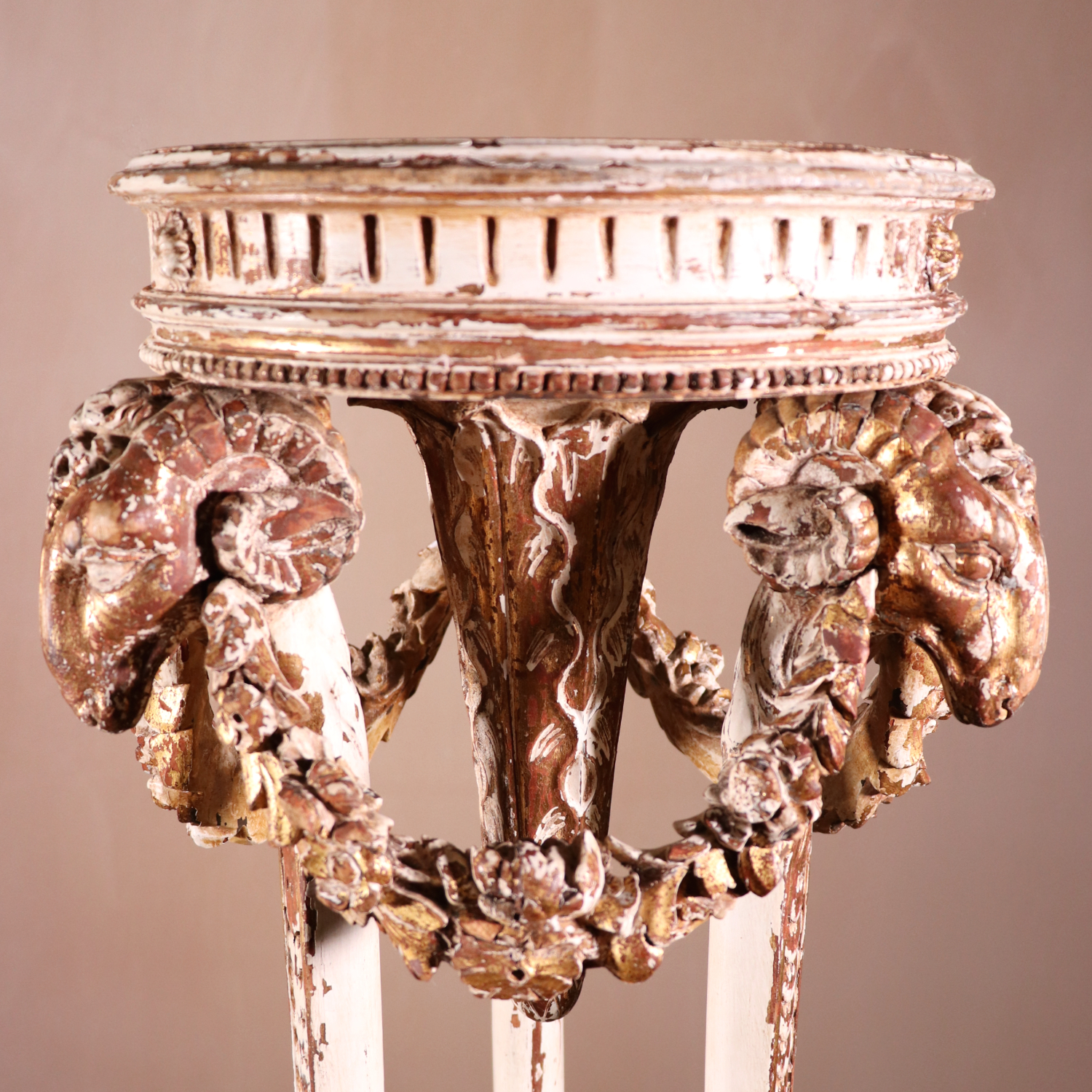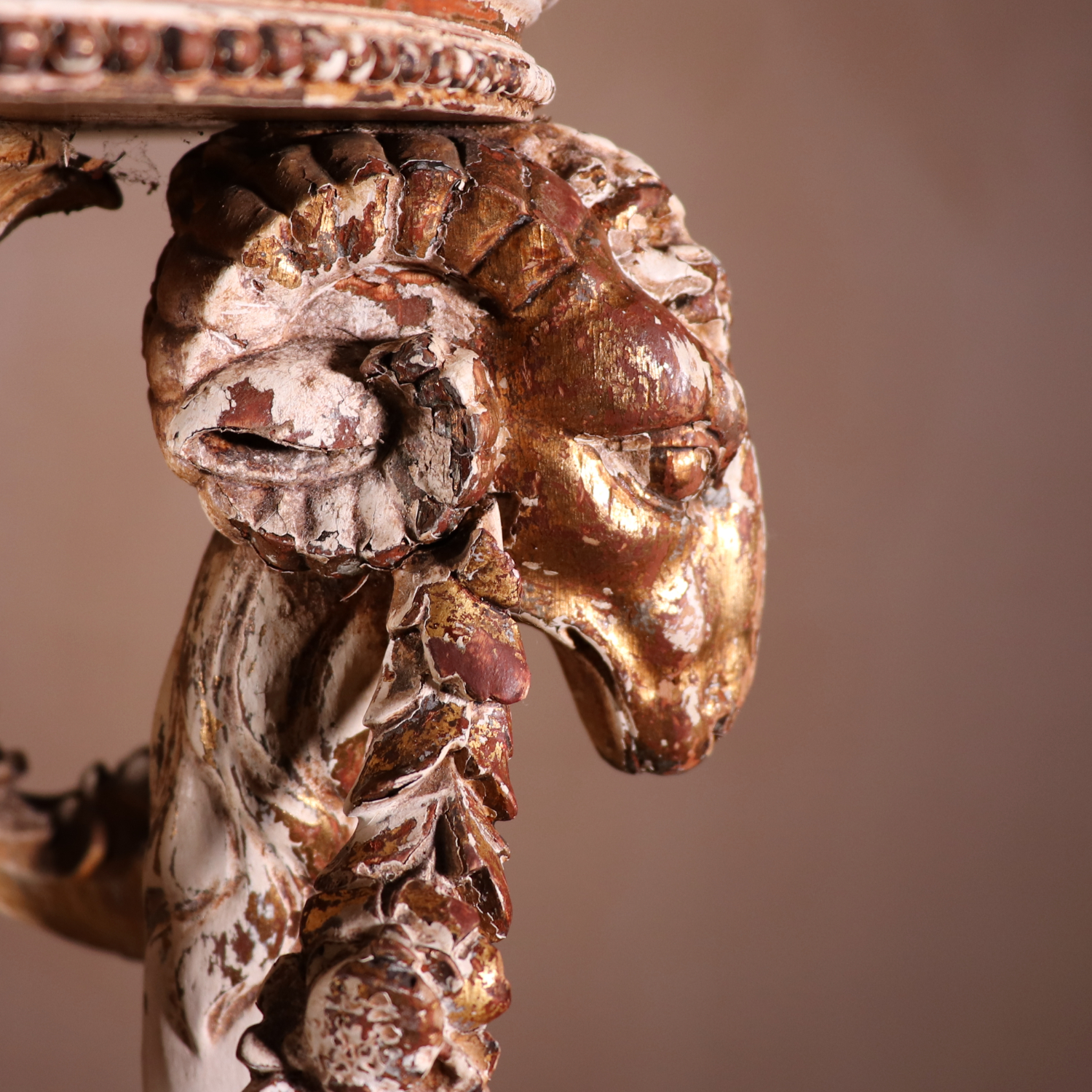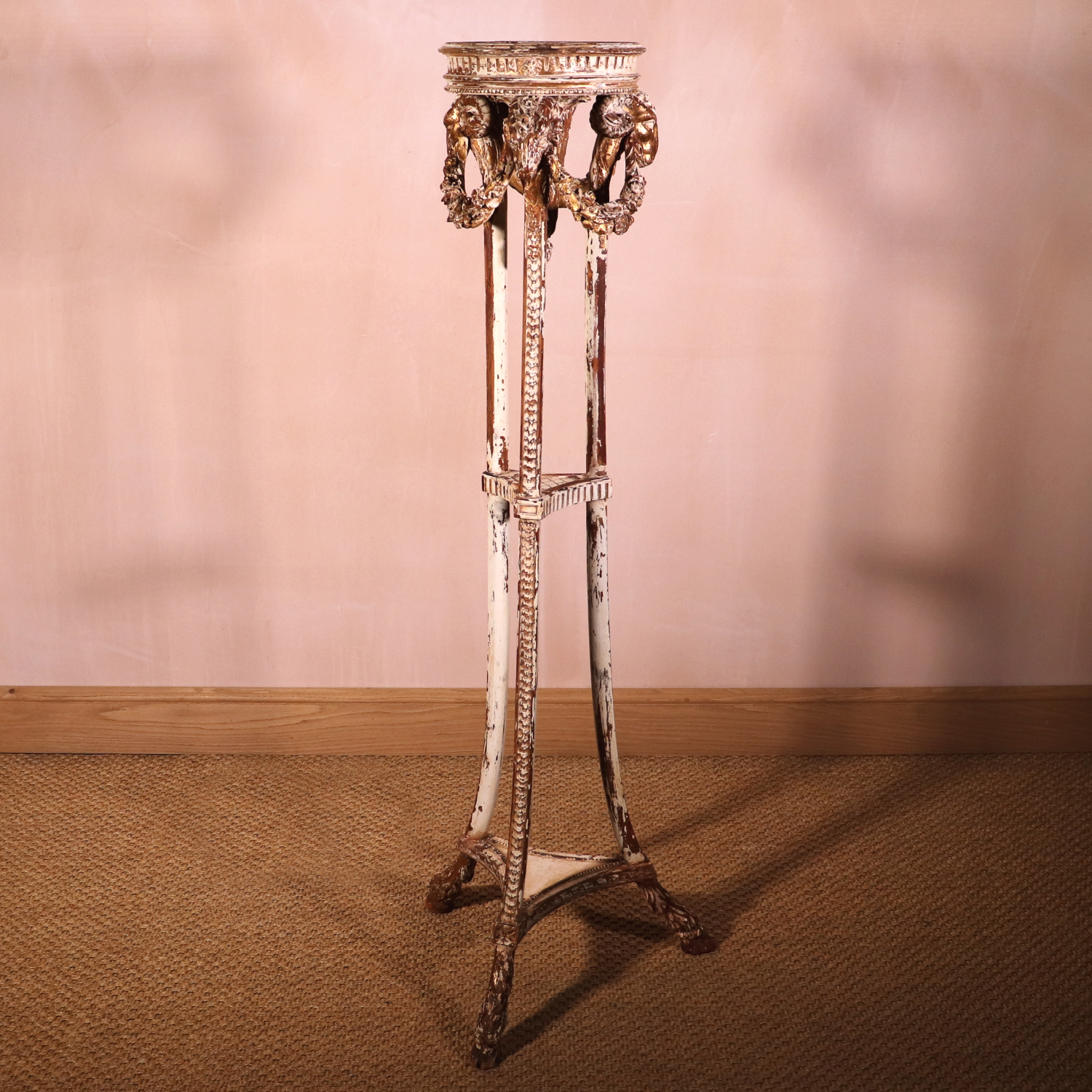November’s item of the month is an Adam period neoclassical torchere, circa 1790, in the manner of Gillows, carved in pine with remains of gilt and later white paint surface.
Robert Adam (1728 – 92) was one of the most important British architects working in the Neoclassical style – a movement in the decorative and visual arts that drew inspiration from the ‘classical’ art and culture of Ancient Greece and Rome. In 1754 Adam embarked on a Grand Tour, spending five years in France and Italy visiting classical sites and studying architecture under the French draughtsman Charles-Louis Clérisseau and Italian artist Giovanni Battista Piranesi. On his return, Adam established his own practice in London with his brother James. Although classical architecture was already becoming popular, Adam developed a distinctive and highly individual style which was applied to all elements of interior decoration, from ceilings, walls and floors to furniture, silver and ceramics. The ‘Adam Style’, as it became known, was enormously popular and had a lasting influence on British architecture and interior design.
Adam’s version of the Neoclassical set off a revolution in style. His distinctive decorative system used a limited range of ornament, brilliantly distilled from ancient and Renaissance sources, chiefly wall paintings and room decorations. By the early 1760s, Adam had developed a form of interior decoration that sought to suggest the rooms of the ancients, but adapted to modern uses. Ceilings and walls, and often floors, were covered with continuous areas of small-scale ornament, which played down architectural definition. Neoclassicism took about ten years to spread beyond the fashionable elite. By the early 1770s full-blown neo-classical furniture had penetrated the general market, and in 1774, the architect John Carter could describe a pair of Adam-style panels shown in the Builder’s Magazine as being “in the present reigning taste”.
Information taken from Robert Adam: Neoclassical architect and designer · V&A (vam.ac.uk)



